Was I Good Enough? b/w Mike Morasky and Frank Grow
I should be promoting a new album but instead I'm interviewing Mike Morasky (Steel Pole Bath Tub, Milk Cult), and director Frank Grow (Love God, Red & Rosy)
Was I Good Enough?
Out now on Closed Casket Activities Intensive Care & The Body - Was I Good Enough? Eight songs of everything all at once as it collapses in on itself. Cover art by fellow lifer Jon Kortland of Iron Lung and Pig Heart Transplant. Videos to two of the singles by skintape are on youtube and are the stuff of nightmares.
Hard to say much about this one, we’ve been sitting on it for a while so we could line up schedules and not tread on the toes of other releases from both parties.
In a recent combined interview and review feature for Louder than War I talked about collaborative works as not trying new things, but of highlighting things already present.
The best collaborations seek out underlying patterns and approaches and reframe them more upfront; it’s about someone else helping you to understand what’s already there.1
Both being two piece acts2 leads to a natural openness to expanding possibilities and ways of working.
In the Louder than War interview I dismiss the idea that there is anything to be gained in 2025 discussing music in terms of it being either extreme or experimental (things I get asked about a lot). Being “extreme music” or “experimental music” are generally convenient short cuts that describe less than people assume they do.
I’m not really very invested in the ideas of either extremity or experimental when applied to music, I grew up on Radiophonic Workshop, Public Enemy, and Carcass, it’s not extreme, music just encompasses different approaches and outcomes. By any metric FKA Twigs’ Eusexua is far more extreme, experimental, or challenging than most things you’ll find this year and Eusexua is a mass-marketed pop album with no pretensions to be anything else.
In an interview for Discipline Magazine that slightly predates the press cycle for Was I Good Enough? I talked about my interests in audio being less tied to genre and more to possibilities of creation.
The roots of noise, industrial, dub, and hip hop can be simplified into youth culture repurposing cheap consumer electronics and using them in ways they weren’t designed to form entirely new musical styles. Ultimately, these cheap consumer goods have been developed and sold back to us as specialist equipment…
…Hip hop and dub were historically about manipulating prerecorded music into new forms – hip hop used vinyl as a necessary creative tool, fetishizing it as both process and end product. Similarly, experimental music in its various forms has emphasized tape loops, found sound, and hands-on manipulation of prerecorded audio.
Does anyone in 2025 hear Transylvanian Hunger and find themselves shocked at the extremity of it? And is that even a meaningful way to interpret that album? Same question for Quaristice, is this experimental music or have we just reached the point where this is just music? I’m being disingenuous and leading you to my preferred answer, but my point is that calling Quaristice experimental, or Transylvanian Hunger extreme says nothing about the fields Darkthrone and Autechre operate in and how they’ve developed and spread. In the experimental category it misses decades of music that was not consecrated by academia and art funding institutions (Jamaica of the 1970s and black New York of the 1980s to name but two).
Finding the weirdos doing interesting things whilst avoiding Rap Rock
There’s a long history of utterly terrible music made by rock bands with a sampler, but there are some gems to be found that aren’t merely clunky attempts at replicating hip hop cadences with chugging guitars and/ or growled vocals over the top. I’ve spoken before about Justin Broadrick, mostly the first Techno Animal album and Godflesh’s Slave State EP, so there’s no need to revisit that ground.
Sometime around 1991 I picked up Lurch by Steel Pole Bath Tub on a whim in Jumbo Records in Leeds (when they were still in the St John’s Centre and Leeds was going through it’s Ballardian fascination with shopping centres), and much like Slave State Lurch was an instant “I get this” moment.
[Montage footage of teenage me studying the accompanying comic book/ zine (“who the hell are these Warlock Pinchers guys?”3), buying the albums Butterfly Lover and Tulip, fixating on the level of distortion on the bass, buying a bass and deciding that would be my instrument (you can blame Godflesh and Steel Pole Bath Tub, and maybe Dead Kennedys too), staring at the cover and trying to imagine what the film Red & Rosy by Frank Grow is about (we’ll be hearing from Frank soon enough), and being really into the idea of haphazard backing tapes and samples playing underneath feedback.]
Montage footage ends, it’s now 1993 and I buy a CD called Love God by the band Milk Cult. I buy it because two members of Steel Pole Bath Tub are involved and it looks weird.
Track 1 is billed as “The Original Soundtrack Recording! Of Frank Grows' “Love God”” and there are story board panels in the book. OK, Frank Grow, I know the name from Lurch.4
Musically this is pretty weird, like a low brow response to This Heat. The Clown Party suite at times could be outtakes from Coil’s Black Light District if Coil were channeling the quintessence of Slayer. Surrealist tape loops and musique concrète tied together with bursts of Dave Lombardo Motorik beats. Second Slayer reference, it’s very much there throughout Love God, check the primitive scratching used as mimicry of thrash guitar 16th notes.
Alas Milk Cult have been vanquished to be a forever footnote in the saga of Steel Pole Bath Tub’s incredible final album Unlistenable and the major label nonsense they had to deal with that lead it to it being unreleased for years. If they’re not a footnote in the cautionary tale of major labels they get a passing “Mike Patton did a song with this band called Milk Cult”.
The original substack piece I’d planned was a longer “this is the stuff that influenced Was I Good Enough?”. Just before converting my notes to the article I decided to watch Love God (the film) and huh, no Milk Cult. Lots of Lubricated Goat, fragments of Hammerhead and Bad Brains and others. But no Milk Cult.
So I did what anyone would do and instead of promoting our new album I spoke to Mike Morasky of Steel Pole Bath Tub about Milk Cult, and Frank Grow about Love God.
“Excuse me, I really dig women with blue skin, you know where I can find one?”
Love God the film is a surreal trip that is unmistakably a product of Gen X. It’s equal parts Pee Wee’s Playhouse, Liquid Television, Troma, and horny Kaiju. The film follows a number of threads including being truly seen and understood, and attempting to transcend mortality and becoming divine. And giant parasites in the sewer system, definitely giant parasites in the sewer system.
One review on Letterboxd pretty much describes half the people I work with in music:
Maybe the best possible version of a "before my time" Gen X sensibility I tend to have a love/hate relationship with. like, some guy with a bunch of kaiju figures and lava lamps on his bookshelf, Melvins t-shirt, Frank Kozik Killdozer poster in the bathroom, ambient sound of kung fu VHS tapes on permanent loop … this genre of guy is mostly extinct now.
Due to a clusterfuck around the rights you can watch it on the Internet Archive
Listen to Milk Cult, watch Red & Rosy and Love God, and buy our new record
.
A conversation with Mike Morasky about Milk Cult
When did you first meet Frank Grow and what was the relationship?
Steel Pole Bath Tub was on one of our earliest tours and we played somewhere in San Diego. Afterward we stayed with a friend from Montana at his warehouse in downtown S.D. It was one of those art warehouses which were common at the time and all of his roommates were artists. Frank was one of them and we hit it off. Frank and I took his motorcycle to the university where I think he was working, borrowed a 16mm projector and he did a screening of Red & Rosey for us that night. We loved it, ended up using some frames from it for our Lurch album cover art and screened it before a bunch of our shows, including taking it on tour with us in the Pacific Northwest. We also formed a band with Frank “Blood Pumper’s Racing Club”, in which we covered some of the surf rock tunes from the film. I also did some other work with Frank when he was editing Sophia Coppola’s “High Octane” video series. We did a lot of collaborating in those days.
What was the beginning of Milk Cult and why was it necessary to do it separately from Steel Pole Bath Tub?
I had been working with Eric Holland and I had been doing a decent amount of work at a small S.F. studio called “Poolside” and we had a fairly free run of the place when clients weren’t working there. I had also purchased a Casio FZ1, which was a very early sampling keyboard and had an 8 track tape machine at home. I had been into sampling since I got my first sampling delay unit the “Korg SDD-2000” in Tokyo in the early 80’s and so I started messing around with the Casio at home.
Steel Pole had definitely done a lot of sampling and we were into it both practically as well from a conceptual art standpoint but in that context it was usually more of a segue or overlay of sorts and not usually key to the music itself. So the idea with Milk Cult was to do some works that were more centered around the sampling and abstract sound works itself.
At some point Frank had mentioned he had a new film that needed a soundtrack so I signed up. As the project went on, it seemed right to start collaborating, which is when Dale Flattum and Eric got involved. We did a bunch of work out of my house but eventually basically moved the project into “Poolside”.
What was Eric Holland’s role in Milk Cult?
At that time, Eric was mostly a creative engineer, doing all the mixing and ultimately handling the more technical side of things as well as sample editing and generation. As time went on Eric’s contributions expanded to creating core samples, loops, etc. It was truly a “studio band” of sorts and Eric was a key component for sure.
What equipment were you using in Milk Cult and how did you make Love God?
It started in my home studio with a Casio FZ1 sampling keyboard, a bunch of fx (Yamaha SPX90), guitar pedals, portable cassette machines and an 8 track cassette machine. By that point, I was also running an early Apple computer (Apple 2?) with “Sound Designer” and “Alchemy” on it so I did a decent amount of digital editing there too but it was still very early days for that.
Dale was also contributing with his cassette constructions, which we’d both been doing for a while in Steel Pole. We then moved the project to Poolside where we had a 2” 24 track machine, a lot more mixing and processing gear and another, slightly beefier sampler.
If I remember correctly, I believe we tracked the whole thing to tape because protools had yet to happen. I don’t think Love God had any live acoustically tracked instrument performances on it other than maybe a turntable if that counts as “acoustic”.
What were your aims and how did you approach creating Love God?
With Steel Pole Bath Tub, we’d already spent a bunch of time exploring using the studio as an instrument, inspired by the likes of Brian Eno but we were still really a traditional rock group of sorts and so we wanted to explore some things a little more experimentally and free from the expectations of being in a band. Love God gave us an excuse to do that.
We were also very much into sampling as post-modern appropriationalism inspired by the early hip-hop scene, punk writer Kathy Acker and others.
Interestingly, after doing Love God, we started using samples as a way to drive collaboration with others, our later records were an “exquisite corpse” sort of process where we would create interesting patterns from appropriated samples and then have collections of artists pay along to that bed. We’d then sample that and make constructions from the results.
A conversation with Frank Grow about Love God
How did you first become aware of Steel Pole Bath Tub and what was that relationship?
I knew Mike, Dale, and Dorothy for years before they started the Milk Cult project. Me and 2 other roommate/best friends/fellow artists lived in a ginormous 6400 square foot artist “live/work” space in downtown San Diego. 24’ high ceilings! We called it Wild Child Productions. The bulding was the old San Diego First Baptist Church, which takes up a quarter of an entire city block, on the corner of 10th and E streets.
We rented the entire basement and divided it into 3 studio work spaces, 3 living spaces, and two exhibition/performance spaces. It also came with the industrial-sized church kitchen. The were a bunch of other art freaks living upstairs in the rest of the church. The band Crash Worship lived right above us in the sanctuary/chancel, lol. Their guitarist Jeff kept his 16’ anaconda in the Baptismal font.
Over the years, many bands passing through san diego ended up crashing at our place. Morasky was friends with one of my roommates, Mike Weix, and I met them when they played at the Casbah while touring their Butterfly Love album. I had recently finished Red and Rosy and they saw it and invited me to screen it before some of their shows. Good times those! They used a still from R&R for the Lurch album cover and I think they took a print on the road during their Lurch tour.
Anyway, I don’t remember exactly how Milk Cult came to do the track for the Love God short film… Maybe I approached them after hearing an early Milk Cult track? I had been working on the script for a few years so there was plenty of time to throw the idea around. I also traveled up to san francisco and stayed at Mike's a few times, actually, the four of us (SPBT and me on guitar) did a show as the Blood Pumpers Racing Club where we played the Red & Rosy soundtrack live at the Chameleon bar. I think it was on a Saturday afternoon. There were like 11 people there. I designed costumes for all of us that were like religious robes with drag racing fire safety style full-head hoods made of painted latex rubber. All striped and numbered and metal flaked. My hood had copper “exhaust pipes" extending from my head like horns/headers. I had two propane tanks strapped to my arms which fed gas through hoses to the pipe horns on my head that we lit on fire for the finale. Someone had a video camera at the show but I never saw the footage. Fun gig!
The Love God album came out in 1992 and contains photos and story boards from the film in the insert, the Love God film (somewhat) surfaces in 1997 and Milk Cult aren’t in the soundtrack. I’m assuming there are two versions of the film and Milk Cult didn’t make it into the final version?
There were two Love God films- the first was a short film that I made essentially as a fund-raising tool in 1992, a proof of concept film to inspire investors to fund the feature-length Love God film. However I wasn’t happy with the way the short film turned out, so I didn’t use it in our feature-film fund raising meetings. Without a doubt, the best thing that came from that film by far was the Milk Cult track.
By 1995 Ted Hope and James Schamus at Good Machine Productions in NYC were able secure funding for the feature length film. Part of the money came by selling the sound track rights to VelVel records, who were excited about releasing a compilation cd of the film’s music. I was already leaning towards using lots tracks from a variety of disparate bands and genres to create a more chaotic collage-like soundscape, as opposed to using a single composer, so the Velvel thing made sense at the time.
Remember- compilation sound tracks were currently a big thing due to Tarantino’s Pulp Fiction soundtrack becoming a solid commercial success the previous year.
But regarding Milk Cult / Steel Pole / Morasky not being included on the feature film… I can’t remember why that didn’t happen. They had just signed to Slash records, so maybe that had something to do with it, they were busy, I was busy, we were on opposite sides of the country now… I don’t know. I remember using Steel Pole as temp tracks in the movie during editing- especially Pseudophedrine and Bozeman- their Miracle of Sound In Motion album is still one of my all time favorites. I don’t know, its all a blur, we had to slam that entire film together in like 5 weeks I think, which is insane.
Stuart Gray [AKA Stu Spasm, frontman of Lubricated Goat] stumbled in at some point, which added to the chaos. We shot Love God in 19 days, had like 6 weeks to edit, and a few more weeks to finalize post- mix, color correct, transfer to 35mm. We had been accepted to Sundance so our deadline was hard, and no time for audience test screenings.
First time we all saw it was to “QC” the 35mm transfer. I put QC in quotes cause there wasn’t time to fix anything even if we wanted or could afford to… that was our cast and crew screening! In a screening room at the DuArt film lab in NYC. Crazy.
I’m aware of some extremely frustrating issues of rights around Love God, I believe there was a physical edition of it at some point, including a Love God manga and making-of DVD extras. What’s the status of the film now and why is it only available via the Internet Archive?
Good Machine produced the Love God feature film in 1995 and were able to secure a distribution deal in Japan and a few European companies but not for the US. Over the next several years, Good Machine was bought by Sony Classics, who shipped all of Good Machine’s physical assets and records to, I’m assuming, some Sony-owned storage facility. A few years later, Universal Pictures bought Sony Classics, and apparently they moved all the Good Machine records and assets from the Sony facility to a Universal-owned facility.
Around 2002 I ran into Marcus Hu, co owner of Strand Releasing, at the airport, who expressed interest in releasing a Love God DVD. Love God’s producer Anthony Bregman raised the money to master an awesome dvd that contained the film, the film with a commentary by myself, Anthony, and actor Will Keenan, a digitized copy of the Love God Manga, and a “making of” documentary.
The company who authored the DVD also designed the packaging, which I was able to supervise and sign off on, and they did a killer job. We were really happy with it and super excited to finally get the film out in the public. However, when it came time to deliver the master DVD to the distributor, we discovered that ALL the film’s legal documentation- the contracts, releases, synch and licensing deals, ALL the paperwork, everything, was missing. No one could find any trace of the film (the only 35mm print of the film also disappeared around the same time).
Apparently, sometime during the shuffling of Good Machine's assets between the various buyers and sellers all of Love God’s production documents and records were lost. Without these legal documents, distribution became, and remains, legally impossible.
It sucks because Good Machine did a rock solid job securing all the necessary rights, deals, licensing, etc, "in all media for perpetuity” and that beautiful DVD would have been released without any legal issues back in 2002, and today the film would be available to all interested streaming services.
Since then I’ve given away hundreds of home-burnt DVD copies, which I’ve stopped doing as I don’t own a DVD player anymore, but I continue sending out links to download digital files of the film and the soundtrack, and it’s currently available to watch on YouTube, unless they pull down for violating music copyrights (which happens now and then but I just repost it) which it isn’t because we definitely secured rights to all the music, but can’t prove it.
Red & Rosy (1989), Tetsuo (1989); what the hell was in the atmosphere that these two films both came out at the same time?
Yeah I don’t know… I loved Tetsuo and definitely felt an instant kinship and a deep respect for the film’s look vibe and custom film craft. The way I see it now, Red & Rosy was my memoir based on growing up in a crazy dysfunctional family amidst southern California's violent death-infused hyper stylized sleazy speedy drag racing subculture- really a sub-subculture, or the sport’s dark underside, because drag racing for a large part was pretty conservative, even back in the 1960s and early 70s. I don’t know where the fuck Tetsuo came from. Lol.
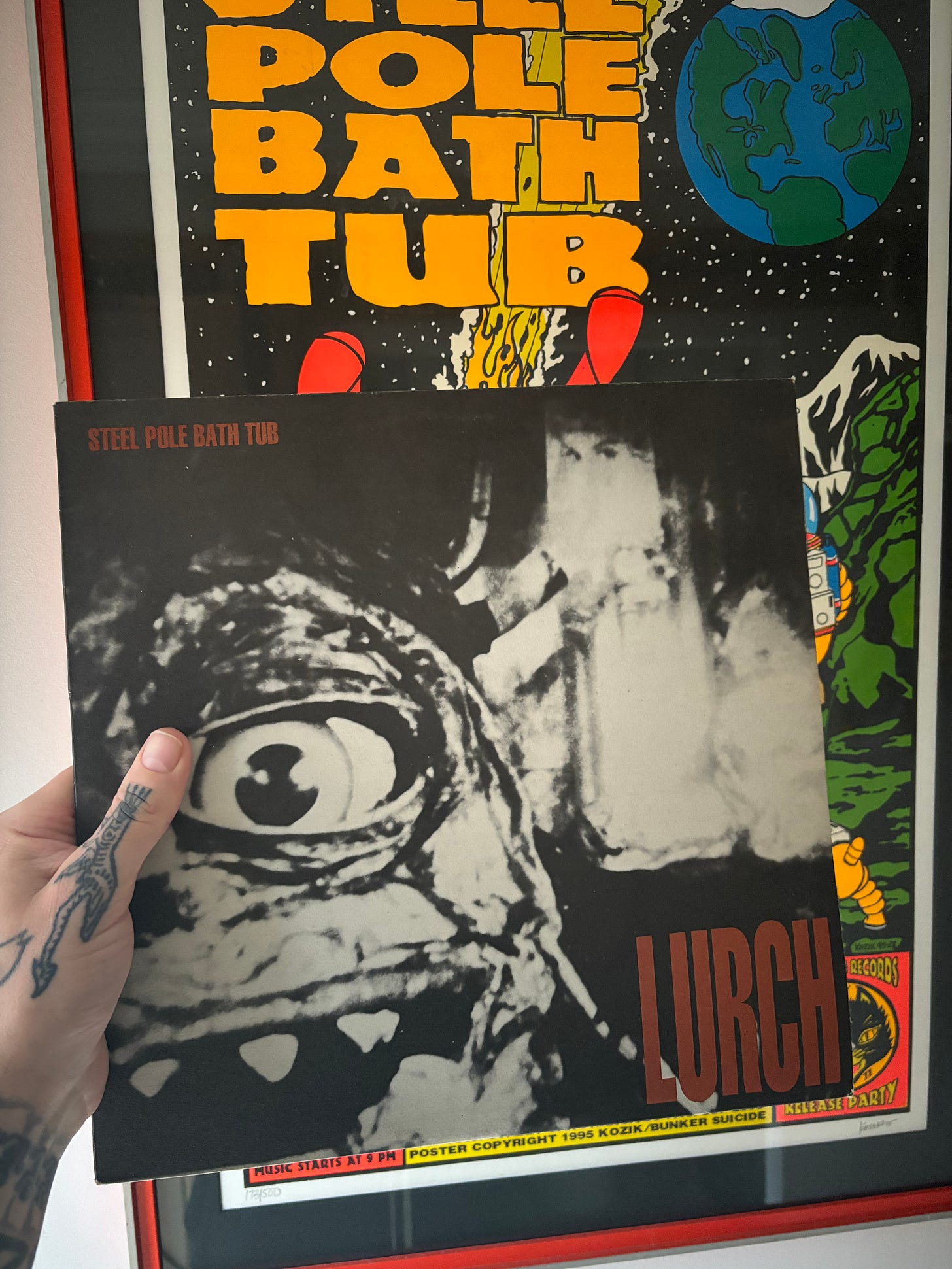
[I haven’t done a Recently Listened To and Recently Read in this post because I’m mindful of this being too long, if you want a separate post of that kind of stuff before summer when I’ll be posting about a number of new releases due out on Phage, Iron Lung, and Closed Casket Activities, plus a soundtrack in a feature film debuting hit my e mail/ DMs/ astral body]
This is how I approached Harm’s Way several years ago and did two remixes and in a roundabout way how I ended up releasing material via Closed Casket Activities
Intensive Care now has a third member in Eric King (The Endless Blockade, Column of Heaven, Bleeding Out) he’s on the Intensive Care track on Scraping the Divine and has played all our admittedly few shows for the last 18 months
The answer is I still don’t know, imagine The Bloodhound Gang 20 years earlier for AmRep listeners, they were the only band in the 1980s influenced by both Schoolly D and Big Black that I’m aware of. Westword published a great oral history in 2010.
Find Red & Rosy on youtube, very enjoyable and recommended if you’re searching for the missing link between Basket Case and Tetsuo





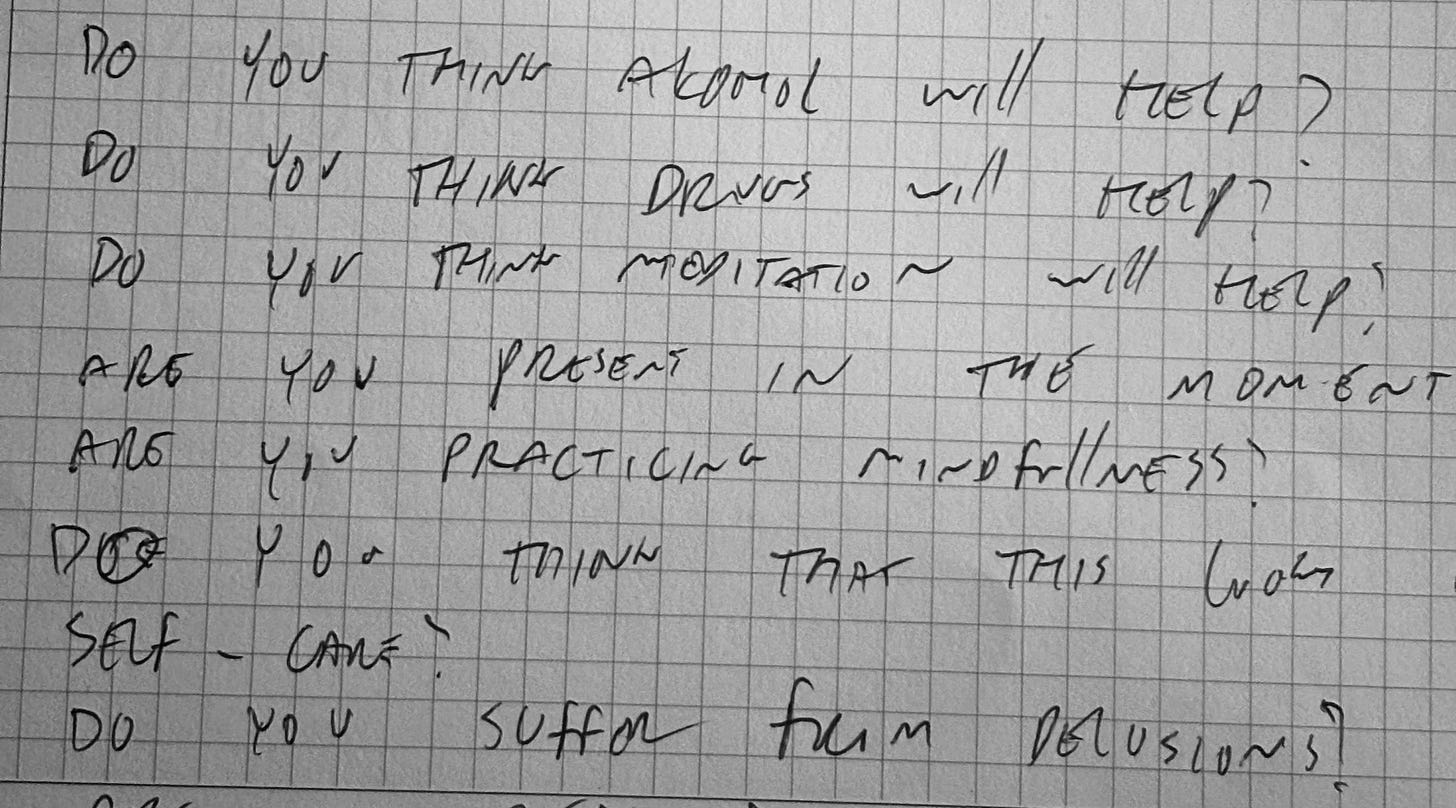
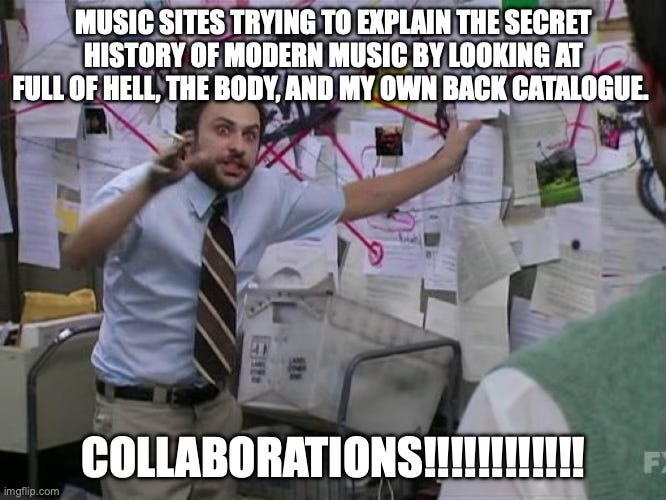


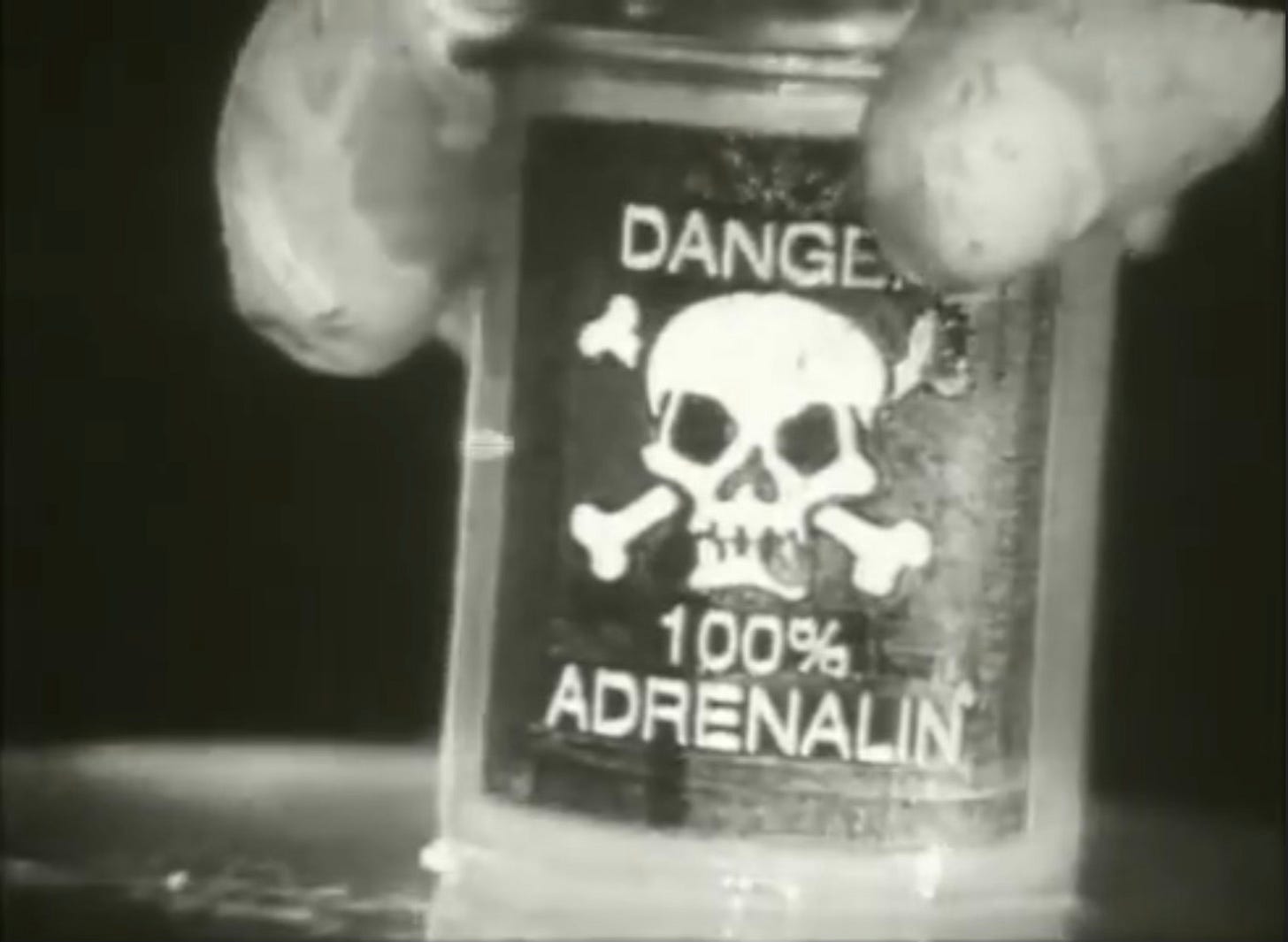


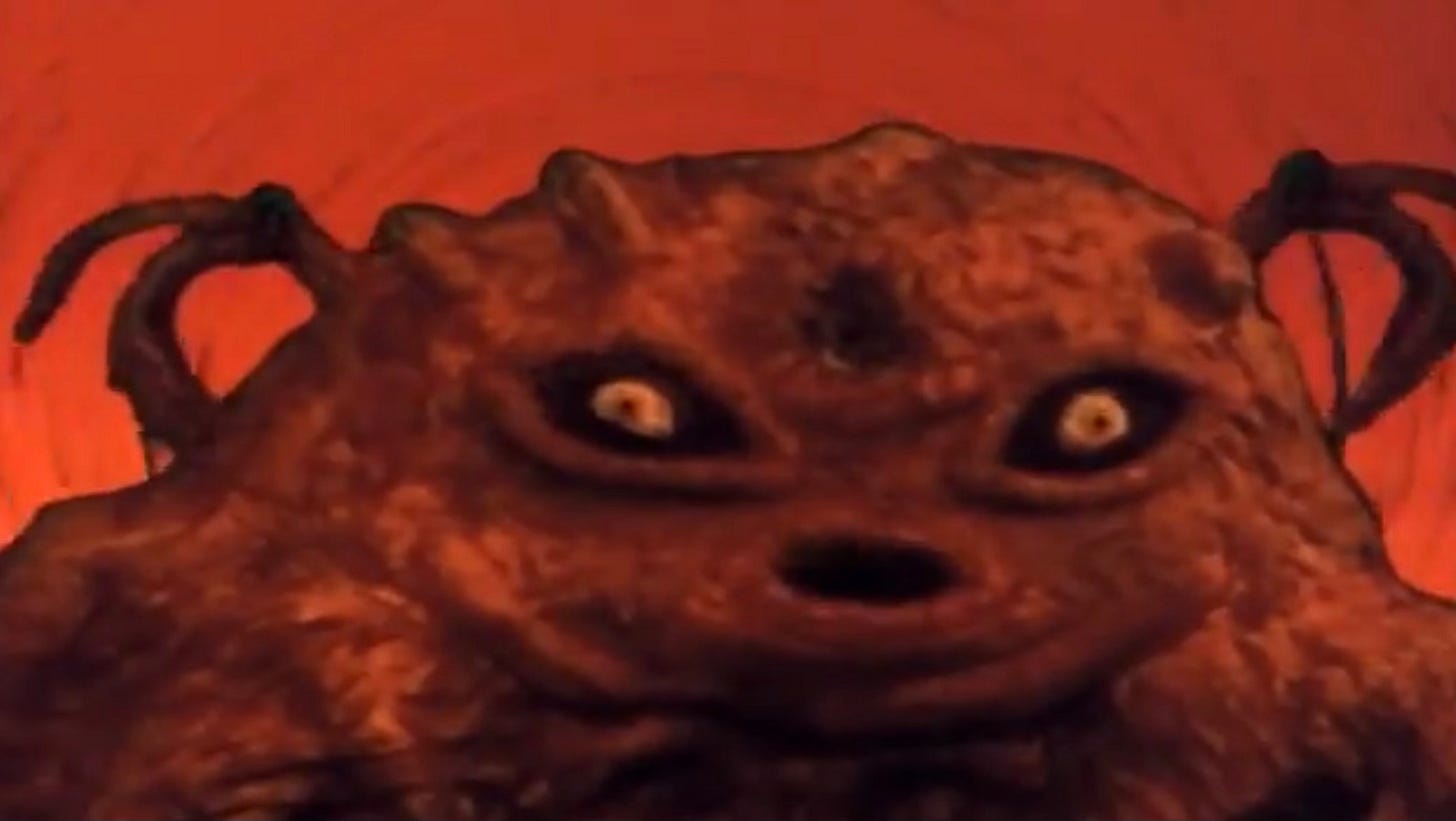
I still dont know how I've owned no less than 3 copies of Lurch over the years and still never seen the comic.